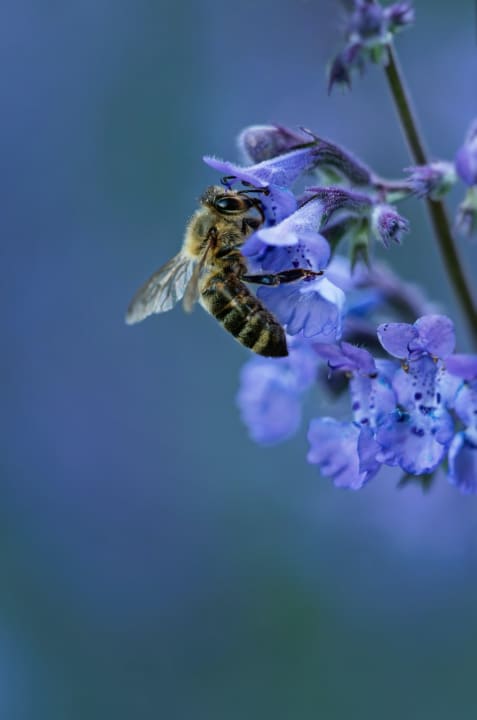Winter Bees
As a snowflake may drift into a front yard, you will find three kinds of people. Some may run out with joy at the winter wonder. Others stare with curiosity from the window. The rest cuddle up indoors and try to think warm thoughts.
Honeybees fall into the third category, though they cuddle up much sooner than we do. Once temperatures fall to 50 degrees, honeybees—or should I clarify, the female bees—gather inside their hive. Male drones are often left outside to freeze, as breeding season is over and their large consumption needs threaten the winter supply (see our “A Bee’s Life” blog post).
Beginning of an End
While low temperatures prevent bees from flying, the pollen level is the true trigger for when diutinus bees start to be produced. As pollen becomes scarce, the colony prepares for winter by creating diutinus bees from female eggs, in a similar fashion to dedicating a queen from a female egg.
A queen bee is born by feeding a female egg a diet of royal jelly. Like the queen, winter bees have a special, lean larval diet—in contrast to the queen’s rich diet. This protein-deficient caste grows fat-enlarged bodies to produce vitellogenin, which can supplement a pollen supply if needed.
Survival of the Honey Bee
To survive the winter, the bees must stay warm and fed. The colony will swarm within the hive and form a tight winter cluster, placing the queen at its core. The workers will shake and shiver (vibrating as we have seen them do in a waggle dance) to generate heat.
The center of the swarm will maintain a temperate around 90 degrees, while the outside of the swarm will be around 50 degrees. To survive, the swarm will crawl together in formation to reach their reserves of honey.
And this is how they live for the entirety of winter. In a giant mass, constantly swapping places to keep everyone warm and fed.
Will The Winter Bees Make It?
The colony’s survival entirely rests on the preparations made in the previous season and if any notable season. A diutinus bee can run out of vitellogenin, and if a dry spring follows winter, the colony may very well perish to starvation.

What If Temperatures Rise?
As we have seen this winter in Texas, sometimes a winter may stay above 50 degrees. What then?
If the temperature goes above 50, the colony may briefly leave the hive to dispose of excrement. But, without pollen to collect, the colony will retreat to the hive to stay warm and hold on until pollen and heat become plentiful.










